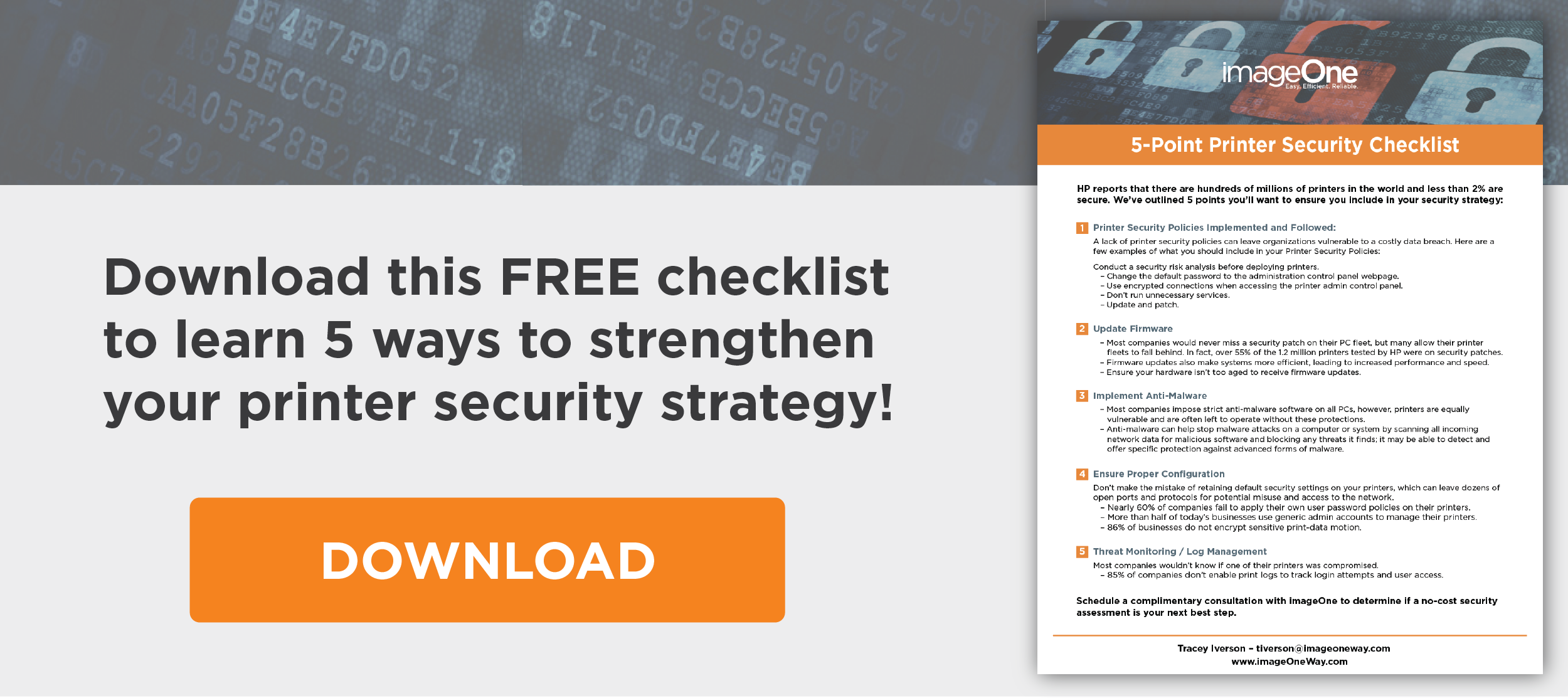The topic of security has received a lot of attention lately due to the recent hacks of high-profile companies. It seems like we can’t turn on the news anymore without hearing about a recent computer hack where boatloads of private data were infiltrated and exposed.
Hacking attacks are on the rise these days, and cybercriminals are looking at just about any entry point they can exploit to gain access to networks with sensitive information—
—and this includes finding ways into companies like yours.
Now, we don’t want to terrify you. But, the hard truth is that every company is at risk. Also, many IT teams overlook their printers, copiers, and multifunction devices as vulnerable targets. In actuality, they are no exception to being just as critically vulnerable as any other devices.
Unprotected printers pose potential security risks for businesses and consumers that connect with them. Thankfully though, there are plenty of ways to protect yourself, your company, and your people.
The bottom line is—organizations can no longer afford to overlook print devices when it comes to their overall IT cybersecurity strategy.
Why are Printers So Vulnerable?
When companies assess their network security threats, they usually focus on PCs and servers and overlook printers because their functionality seems so basic and internal.
However, the primary functions of printing and scanning important documents make printers ripe for targeting by cybercriminals in the first place. Just think about how many companies and individuals print out documents with large amounts of sensitive information, including tax forms, financial statements, medical information, employee data, and more.
All of that information is sent through the printer making it surprisingly easy for a savvy hacker to intercept.
Printers can pose a security risk when the internal hard drives of network printers store previous print jobs in their queues. Someone who accesses the printer may be able to hack into the printer’s OS and view those documents, which could contain sensitive information.
If queued documents are stored on a built-in hard drive or flash memory, the printer can retain copies of the documents even when the printer has been turned off.
Another office security risk is that documents could be intercepted during wireless transmission. Many of today’s printers, both wireless and wired, can connect directly to the web and have their own embedded web servers.
Printer functionality can also include administration and remote control via a website, and if it’s not properly secured, an unauthorized person could seize control of the printer from a remote location.
Download our FREE Print Security Checklist!
Print Vulnerabilities Are Increasing
IT experts are starting to notice increases in security incidents involving printers, according to new data from HP.
As outlined in the HP JetAdvantage Security Manager Solution overview, nearly 66% of IT managers now believe their office printers contain some type of malware, and nearly 75% of CIOs expect these devices will be the focal points of data breaches within the next few years.
With these issues in mind, it’s vital for any business to make sure their printers have the latest security software installed and are all fully up-to-date. Some of our favorite tools include PaperCut and HP Security Manager.
Armed with the right protection, you’ll in the best position to keep your devices as secure as possible from future security breaches.
Protect Your Printers & Your Business
Ready to take your organization’s security to the next level? Our expert secure print team can help! We’ll also show you how to reduce document management costs and boost your team’s overall efficiency.
If you’re interested in learning more about optimizing your printer security environment, please schedule a complimentary Discovery Call.





